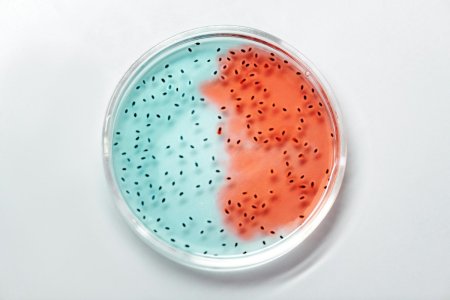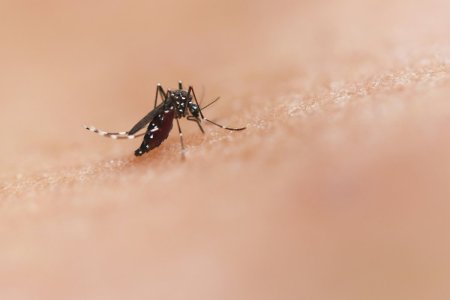Protect yourself: Flesh-eating bacteria surge in Florida after hurricanes!
By
Aubrey Razon
- Replies 0
In the wake of nature's fury, Florida is grappling with an invisible threat that's as alarming as the hurricanes themselves.
The Sunshine State, known for its beautiful coastlines and warm weather, is now facing a surge in cases of flesh-eating bacteria, a danger that has become all too real for its residents.
Here at The GrayVine, we understand the importance of staying informed and prepared, especially when it comes to health risks that could affect you and your loved ones.
So, let's delve into the details and discover how you can protect yourself from this menacing bacterial invasion.
This pathogen thrives in warm coastal waters, and its concentration can skyrocket following heavy rainfall or flooding—conditions that the recent hurricanes have provided in abundance.
The statistics are startling.
Prior to Hurricane Helene's landfall on September 26, Pinellas County had not reported a single case of Vibrio vulnificus, and Hillsborough County had only one.
Fast forward to the present, and Pinellas County has confirmed 13 cases, with Hillsborough County reporting seven.
Overall, Florida's confirmed cases jumped from six before Hurricane Helene to 24 by the end of September. Since the hurricanes, there have been 38 new cases, bringing this year's total to a concerning 76.
People can contract this infection by consuming contaminated seafood or exposing open wounds to infected waters.
The bacteria can be particularly dangerous for those with compromised immune systems, liver disease, or open wounds, as they are at a higher risk of infection.
The Centers for Disease Control and Prevention (CDC) reports that out of the 150 to 200 cases of Vibrio vulnificus each year in the United States, about 20% of those infected may die, sometimes within just a day or two of falling ill.
Ahead of Hurricane Milton's landfall, the department urged vigilance and advised against contact with floodwaters where the bacteria can proliferate.
Here are some key recommendations to minimize your risk:
In the aftermath of Hurricane Ian in 2022, the state reported 29 new cases in October alone.
These recurring incidents highlight the need for ongoing awareness and preparedness when it comes to natural disasters and their health implications.
Remember, while the hurricanes may have passed, the risks they leave behind can be just as threatening. Let's take action to protect ourselves and our loved ones from the rise of flesh-eating bacteria in Florida.
 Have you or someone you know been affected by Vibrio vulnificus? Do you have additional tips for staying safe in the aftermath of a hurricane? Share your stories and advice in the comments below.
Have you or someone you know been affected by Vibrio vulnificus? Do you have additional tips for staying safe in the aftermath of a hurricane? Share your stories and advice in the comments below.
The Sunshine State, known for its beautiful coastlines and warm weather, is now facing a surge in cases of flesh-eating bacteria, a danger that has become all too real for its residents.
Here at The GrayVine, we understand the importance of staying informed and prepared, especially when it comes to health risks that could affect you and your loved ones.
So, let's delve into the details and discover how you can protect yourself from this menacing bacterial invasion.
The Alarming Surge in Flesh-Eating Bacteria Cases
After the chaos wrought by Hurricanes Helene and Milton, Florida's coastal communities are now confronting a rise in infections caused by the bacteria Vibrio vulnificus.This pathogen thrives in warm coastal waters, and its concentration can skyrocket following heavy rainfall or flooding—conditions that the recent hurricanes have provided in abundance.
The statistics are startling.
Prior to Hurricane Helene's landfall on September 26, Pinellas County had not reported a single case of Vibrio vulnificus, and Hillsborough County had only one.
Fast forward to the present, and Pinellas County has confirmed 13 cases, with Hillsborough County reporting seven.
Overall, Florida's confirmed cases jumped from six before Hurricane Helene to 24 by the end of September. Since the hurricanes, there have been 38 new cases, bringing this year's total to a concerning 76.
Understanding Vibrio Vulnificus
Vibrio vulnificus is not your average bacterium. It's a flesh-eating pathogen that can cause severe illness and even death.People can contract this infection by consuming contaminated seafood or exposing open wounds to infected waters.
The bacteria can be particularly dangerous for those with compromised immune systems, liver disease, or open wounds, as they are at a higher risk of infection.
The Centers for Disease Control and Prevention (CDC) reports that out of the 150 to 200 cases of Vibrio vulnificus each year in the United States, about 20% of those infected may die, sometimes within just a day or two of falling ill.
Preventative Measures and Health Recommendations
In response to the rising threat, the Florida Department of Health has issued warnings and guidelines to help residents protect themselves.Ahead of Hurricane Milton's landfall, the department urged vigilance and advised against contact with floodwaters where the bacteria can proliferate.
Here are some key recommendations to minimize your risk:
- Avoid swimming or wading in floodwaters, especially if you have any open wounds or cuts.
- If you must come into contact with potentially contaminated water, cover wounds with a waterproof bandage.
- Always wash thoroughly after exposure to floodwaters.
- Exercise caution when consuming seafood, ensuring it is properly cooked and sourced from safe waters.
Historical Precedence and the Need for Awareness
This isn't the first time Florida has seen a spike in Vibrio vulnificus cases following a hurricane.In the aftermath of Hurricane Ian in 2022, the state reported 29 new cases in October alone.
These recurring incidents highlight the need for ongoing awareness and preparedness when it comes to natural disasters and their health implications.
Remember, while the hurricanes may have passed, the risks they leave behind can be just as threatening. Let's take action to protect ourselves and our loved ones from the rise of flesh-eating bacteria in Florida.
Key Takeaways
- Flesh-eating bacteria cases caused by Vibrio vulnificus have risen in Florida following hurricanes Helene and Milton.
- The Tampa Bay-area counties of Hillsborough and Pinellas experienced the largest increase, with confirmed cases jumping notably after the hurricanes.
- Individuals are at risk of infection through contaminated water exposure or consuming improperly cooked seafood, with people having compromised immune systems or open wounds being more susceptible.
- The Florida Department of Health has issued warnings and recommendations to avoid contact with floodwaters and practice caution to prevent infection.







